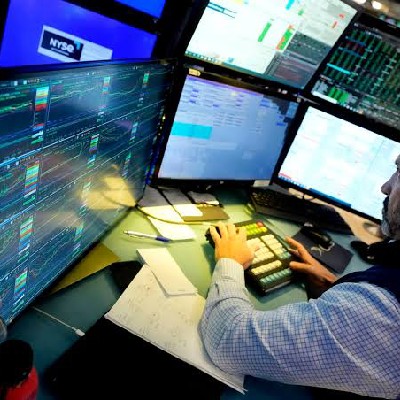XRP/TWD 匯率換算器
今日XRP即時價格TWD
您認為今天 XRP 價格會上漲還是下跌?
XRP 市場資訊
XRP (XRP) 簡介
什麼是 XRP ?
Ripple 是一種革命性的即時總額結算系統(RTGS),因為其擁有促進全球即時貨幣交易的獨特能力,所以脫穎而出。其原生代幣 XRP 在 XRP Ledger(XRPL)中扮演不可或缺的角色,而此平台的多功能性可以以任何代幣交易。
Ripple 是由聯合創始人 Chris Larsen 和 Jed McCaleb 在 2012 年時所推出的,它既是一種數位貨幣,也是一個交易網路。此先進系統是專門為了銀行和金融機構所設計的,提供了一個處理國際匯款和證券的有效方法。
「Ripple」一詞指的是兩個部分——公司和金融網路。另一方面,此平台的代幣 XRP 可當作不同貨幣或網路之間交易的橋樑。本質上來說,XRP 可以當作兩種貨幣之間結算的臨時媒介。
資源
白皮書:https://ripple.com/files/ripple_consensus_whitepaper.pdf
官方網站:https://xrpl.org/
XRP 是如何運作的呢?
Ripple 是一個去中心化的金融技術平台,致力於簡化國際交易。其目標是為了全球匯款創造出順暢體驗,包含即時訊息傳遞、金融交易清算和結算。利用區塊鏈技術和現代 API,Ripple 讓金融機構可以使用 Ripple 網路,以即時進行全球匯款。
Ripple 網路支援多種產品,包含:
- xCurrent:此工具讓銀行可以即時處理全球付款,進而使他們能夠向客戶提供全新的跨境支付服務,xCurrent 的設計致力於滿足銀行的合規性、風險和安全需求。
- xRapid:針對進入新興市場所面臨的高成本問題,要進入這些市場,通常需要預先融資的本地貨幣帳戶,而 xRapid 的開發就是為了降低銀行和付款服務提供商的流動性成本。它可以使用 XRP 為企業提供流動性,為跨境支付提供更高效率、更可靠的流動性選擇。
- xVia:此服務可以讓用戶完全透明地進行全球付款,並提供完整的資訊,例如:附屬的發票。值得注意的是,xVia 不需要用戶下載任何軟體。
Ripple 網路讓客戶能夠快速進入新興市場,並將業務擴展到各個地區。它可以節省大量的管理和時間成本。只需一次連接,客戶就可以使用頂級區塊鏈技術進行全球支付,享受 40 多種貨幣的支付功能,以及按需流動性提供(On-Demand Liquidity, ODL),它是一種預先融資的替代方案。此外,它還透過了通用規則手冊,以確保操作的一致性。
價格波動和監管挑戰
和大多數的加密貨幣一樣,XRP 的價格也經歷了大幅波動。在加密貨幣市場的整體情緒、監管變化,以及有關 Ripple Labs 的新聞等多種因素的推動之下,它的價格經歷了大幅飆升,隨後急劇下跌。
多年來,Ripple Labs 一直面臨著監管審查的挑戰,尤其是來自美國的,美國證券交易委員會(SEC)在 2020 年時針對該公司提起訴訟,指控其透過出售 XRP,發行未經註冊的證券。
2023 年 7 月 13 日時,美國紐約南區法院法官安娜麗莎·托雷斯針對 SEC 和 Ripple 的案件做出了簡易判決,把 Ripple 的 XRP 代幣分類為部分是證券、部分不是。這一個初步判斷讓 XRP 代幣在 24 小時內暴漲 70% 以上,整個加密市場整體開始有上漲的趨勢。
XRP 的價格是由什麼決定的呢?
目前 XRP 價格受到多種因素的影響,並且通常與其建立者 Ripple Labs 相關。就跟許多其他種加密貨幣一樣,XRP 的價值是由市場的供需所決定的。但和其他種數位貨幣不同的是,XRP 無法挖礦;其上限設定為 1,000 億枚代幣。截至 2023 年 9 月為止,目前約有 520 億枚代幣在流通。
Ripple Labs 每年會向市場發行約 10 億枚代幣,以確保其供應穩定。這策略不僅可以防止 XRP 價格升值過快,還有助於其穩定性。然而,XRP 的價格可能還會被各種外部因素影響而波動,例如:監管法律、應用場景、比特幣等其他加密貨幣的價格波動,以及媒體報導等。
在預測 XRP 價格方面,有幾個關鍵因素。其中包含了資產的聲譽、不同國家的法規和稅收、XRP 代幣的應用場景,以及其他主要加密貨幣的價格變化。XRP 價格分析還考量到其與金融領域的整合,尤其是其在高效率跨境支付中所扮演的角色,這增加了其價值。Ripple 的一系列產品,例如:XRP 帳本和 RippleNet 等,都在致力於加強全球金融的轉帳能力,讓 XRP 成為了許多機構的首選。
與其他加密貨幣相比,XRP 獨特的共識機制可以完成更快速、更具成本效益的交易。這種效率讓 XRP 對於金融機構而言具有吸引力,也是決定 XRP 價格的重要因素。XRP 市值、交易量,以及與美元等貨幣的匯率(通常被稱為 XRP 兌美元)也是其在加密貨幣市場上價值的重要指標。
對於潛在投資者來說,關注最新的 XRP 新聞、XRP 即時價格更新,以及 XRP 價格的歷史記錄,對於做出明智的決策來說都是非常重要。無論您是想購買 XRP、參與 XRP 交易,還是想深入研究 XRP 技術分析,對於成功的投資策略來說,了解影響其價格的因素是非常重要。
結論
總之,Ripple 的 XRP 正在透過為銀行和金融機構提供快速、經濟實惠、高效率的服務,以改變全球交易。儘管需要面臨價格波動和監管挑戰(尤其是來自 SEC 的挑戰),XRP 仍然表現出了韌性。最近 SEC 和 Ripple 案件的初步判決甚至引發了價格飆升。然而,未來的監管發展可能會影響 XRP 的應用和價值。隨著 Ripple 的技術繼續刺激金融產業,相關利益者必須保持警覺,以管理相關風險,並留意監管環境的潛在變化。
XRP 的相關文章
XRP 的 AI 分析報告
XRP價格歷史(TWD)
 最低價
最低價 最高價
最高價 
XRP的最高價格是多少?
XRP的最低價格是多少?
XRP價格預測
什麼時候是購買 XRP 的好時機? 我現在應該買入還是賣出 XRP?
XRP 在 2026 的價格是多少?
XRP 在 2031 的價格是多少?
熱門活動
全球XRP價格
如何購買XRP(XRP)

建立您的免費 Bitget 帳戶

認證您的帳戶

將 XRP 兌換為 TWD
常見問題
有多少 XRP 正在市場上流通?
XRP 的價格能否達到比特幣或以太坊的價格?
XRP 是一項好的投資嗎?
XRP 有哪些使用案例?
XRP 在 2023 年能達到 1 美元嗎?
XRP 可以透過挖礦獲得嗎?
當前影響XRP價格的因素有哪些?
XRP是未來的良好投資嗎?
SEC訴訟如何影響XRP的價格?
今年年底XRP的預測價格是多少?
XRP的價格與比特幣的價格如何相關?
我可以在哪裡購買XRP?
投資XRP的潛在風險是什麼?
宏觀經濟趨勢如何影響XRP的價格?
夥伴關係對XRP的價格有什麼影響?
Ripple在XRP價格動態中扮演什麼角色?
XRP 的目前價格是多少?
XRP 的 24 小時交易量是多少?
XRP 的歷史最高價是多少?
我可以在 Bitget 上購買 XRP 嗎?
我可以透過投資 XRP 獲得穩定的收入嗎?
我在哪裡能以最低的費用購買 XRP?
相關加密貨幣價格
您可以在哪裡購買XRP(XRP)?
影片部分 - 快速認證、快速交易

XRP/TWD 匯率換算器
XRP 資料來源
標籤:
Bitget 觀點




Bitget 平台新上架幣種的價格









